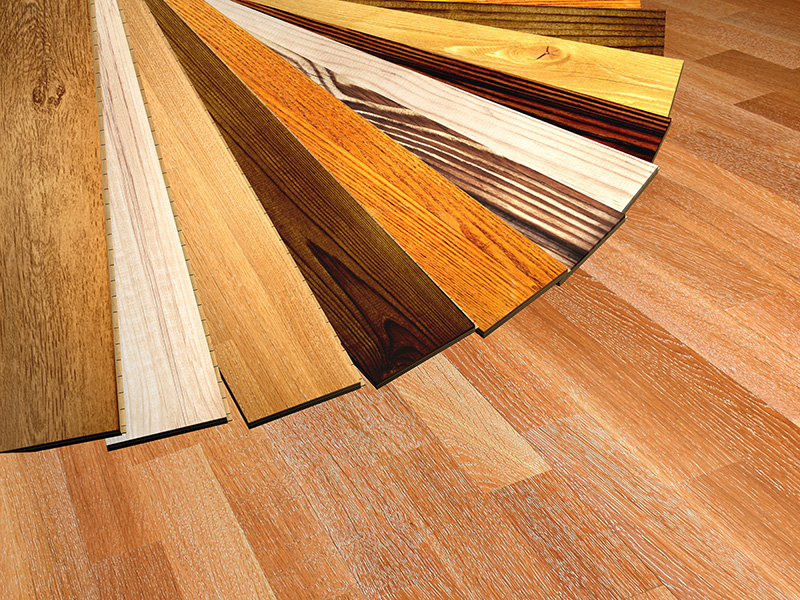WPC:
Wood-Plastic Composites (WPC) is a new type of composite material that has flourished at home and abroad in recent years. It refers to the use of polyethylene, polypropylene and polyvinyl chloride instead of the usual resin adhesives, and more than 50% of the Wood flour, rice husk, straw and other waste plant fibers are mixed into new wood materials, which are then subjected to plastic processing techniques such as extrusion, molding, and injection molding to produce plates or profiles. Mainly used in building materials, furniture, logistics packaging and other industries. A board that is formed by hot extrusion after mixing plastic and wood powder in a certain proportion is called an extruded wood-plastic composite board.
Main features:
The basis of wood-plastic composite material is high-density polyethylene and wood fiber, which determines that it has certain characteristics of plastic and wood.
1) Good processing performance Wood-plastic composite material contains plastic and fiber, so it has similar processing performance to wood. It can be sawed, nailed, planed, and can be completed with woodworking tools, and the nail holding force is significantly better Other synthetic materials. The mechanical properties are better than wood materials. The nail holding force is generally 3 times that of wood and 5 times that of particleboard.
2) Good strength performance Wood-plastic composite material contains plastic, so it has a good elastic modulus. In addition, because it contains fiber and is fully mixed with plastic, it has physical and mechanical properties such as compression resistance and bending resistance equivalent to hardwood, and its durability is significantly better than ordinary wood materials. The surface hardness is high, generally 2 to 5 times that of wood.
3) It has water resistance, corrosion resistance and long service life. Compared with wood, wood plastic materials and their products are resistant to strong acid and alkali, water and corrosion, and do not multiply bacteria, are not easy to be eaten by insects, and do not grow fungi. The service life is long, up to more than 50 years.
4) Excellent adjustable performance. Through additives, plastics can undergo changes such as polymerization, foaming, curing, modification, etc., thereby changing the density and strength of wood-plastic materials, and can also achieve anti-aging, anti-static, flame-retardant, etc. special requirements.
5) It has ultraviolet light stability and good colorability.
6) Its greatest advantage is to turn waste into treasure, and it can be 100% recycled and reproduced. It can be decomposed and will not cause “white pollution”. It is a truly green and environmentally friendly product.
7) Wide range of raw materials The plastic raw materials used to produce wood-plastic composites are mainly high-density polyethylene or polypropylene. The wood fiber can be wood flour, grain bran or wood fiber. In addition, a small amount of additives and other processing aids are required.
8) It can be made into any shape and size according to needs.
PVC:
Polyvinyl chloride, abbreviated as PVC (Polyvinyl chloride) in English, is a vinyl chloride monomer (VCM) in peroxides, azo compounds and other initiators; or under the action of light and heat according to the free radical polymerization reaction mechanism Polymers formed by polymerization. Vinyl chloride homopolymer and vinyl chloride copolymer are collectively referred to as vinyl chloride resin. The density of pure PVC is 1.4g/cm3, and the density of PVC plastic parts added with plasticizers and fillers is generally 1.15-2.00g/cm3. Rigid polyvinyl chloride has good tensile, flexural, compressive and impact resistance, and can be used as a structural material alone. The softness, elongation at break, and cold resistance of soft PVC will increase, but the brittleness, hardness, and tensile strength will decrease. Polyvinyl chloride has good electrical insulation properties, can be used as low-frequency insulation material, and its chemical stability is also good. Due to the poor thermal stability of polyvinyl chloride, long-term heating will cause decomposition, release HCL gas, and make polyvinyl chloride discolor, so its application range is narrow, and the use temperature is generally between -15 and 55 degrees.
The difference:
1. Different materials
2. Environmental protection is also different.
3. PVC is plastic, WPC is wood plastic.
YIDA WPC is a leading wood-plastic composite material factory in Ningbo, China. We have more than 10 years of production experience in manufacturing outdoor floors, outdoor tables and chairs, indoor and outdoor wall panels, stair panels, ceilings, fences, railings, garden handrails, garden pavilions, flower boxes, flower stands, etc. The product has the advantages of waterproof, anti-corrosion, moisture-proof, insect-proof, maintenance-free, green, recyclable, and easy to install. It is widely used in various fields such as building materials, decoration materials, packaging and transportation.


